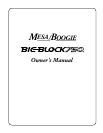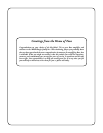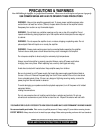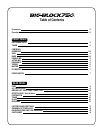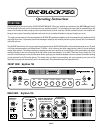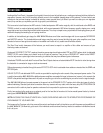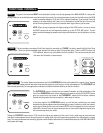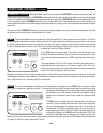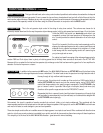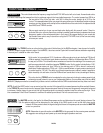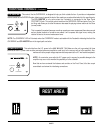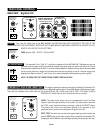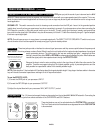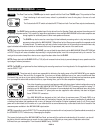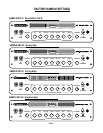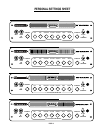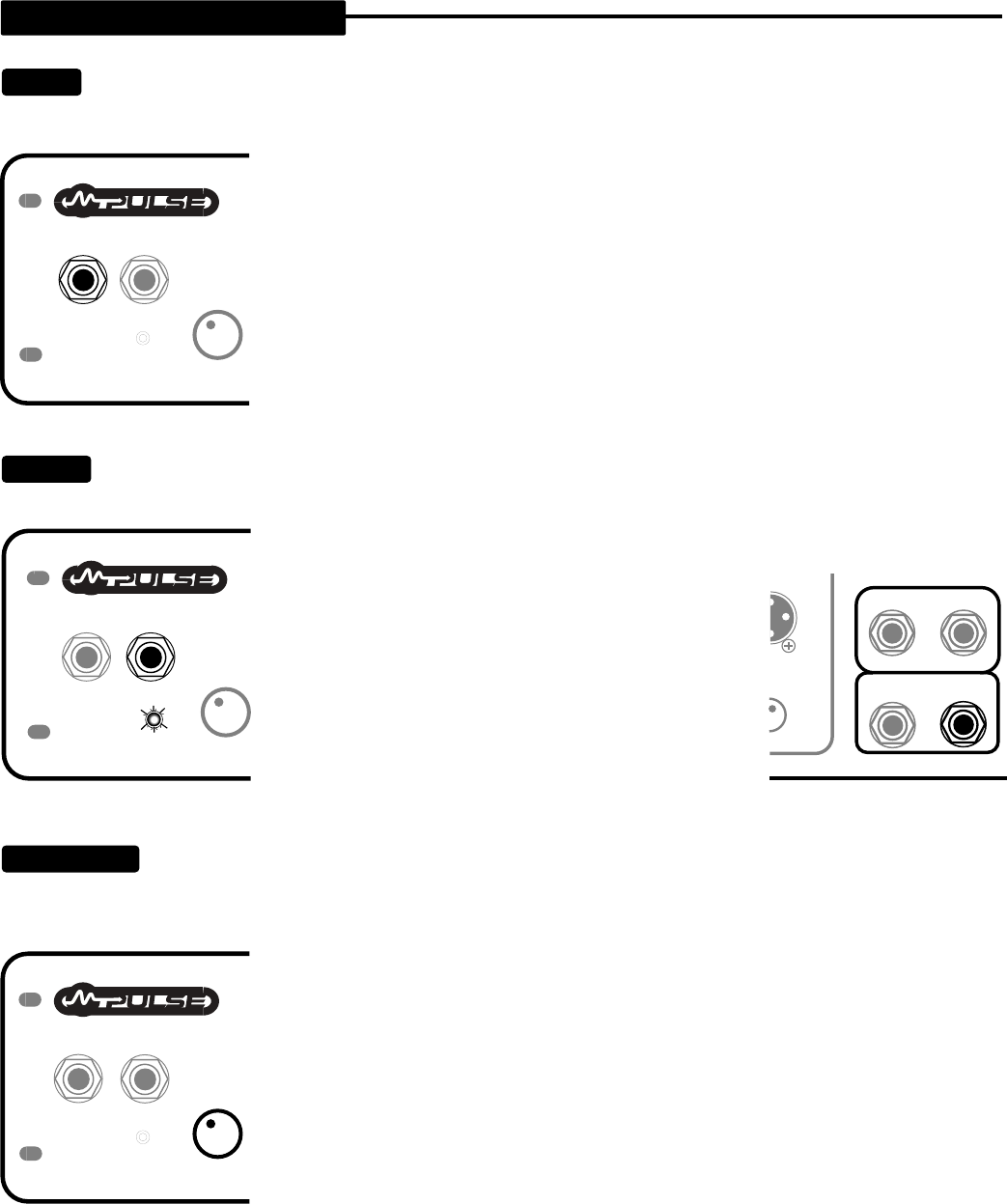
PAGE 3
FRONT PANEL CONTROLS:
INPUT:
This jack is the instrument INPUT which feeds the first tube in the all-tube preamp of the
BIG BLOCK
. It is set up with
enough headroom to handle both passive and active style instruments. For active instruments you may find yourself running the GAIN
control somewhere between 10:00 and 2:00 for optimum headroom. If you do hear a soft clip
creeping in at higher settings, don’t worry, this is the beauty of a tube front end. You may feel
free to drive the preamp for a more furry character when hyper clean is just too clean.
NOTE:
When driving the preamp with higher settings of the GAIN control it is wise to reduce
the BASS control and any low frequencies dialed up on the ACTIVE MID control. This will
protect accidental damage to speakers and help avoid tubbiness or lack of tightness in the low
end.
TUNER:
This jack provides a convenient Front Panel output for connection of a TUNER. It is wired in parallel with the Rear Panel
TUNER output. There is an optimum padded signal present at all times on both Front and Rear jacks. There is a MUTE function and
LED indication, which is only controllable from the Footswitch. There is no mute function avail-
able when the Footswitch is disconnected.
OVERDRIVE:
This control determines the amount of all-tube OVERDRIVE that can be blended with the regular “clean” preamp
signal. This circuit creates a whole new realm of sounds that range from a soft-clip purr, to fully saturated grind. The OVERDRIVE has
been tailored specifically for bass applications and does not disturb the blend dialed up on the tone controls.
The OVERDRIVE circuit is activated via the included Footswitch and the combination of the
Front Panel OVERDRIVE control (which determines the amount) and the O.D.MASTER (which
gives you control over the volume of the OVERDRIVE), means that this feature creates a
channel switching option that can be used for a wide range of choices.
In the lower region of the OVERDRIVE control, you will find that a subtle boost can create
footswitchable soloing options where the added gain is merely thickening, rather than saturat-
ing the signal. Because this circuit has its own MASTER control, stepping out can be easy and
controllable. You won’t have to rely on band dynamics or house sound engineers to give you a
little volume bump when you need it.
Setting the OVERDIVE control above 12:00 reveals the higher gain potential of this circuit. Here a wide range of more obviously
overdriven sounds appear that can be used to mimic an analog synth or provide the grinding aggression for a integral part in a heavy
song. This range showcases how amazingly tight the overdrive tracks and makes this mode an essential part of the
BIG BLOCK’S
sonic power and magic.
S I M U L S T A T E B A S S A M P L I F I E R
TM
INPUT TUNER
MUTE
OVERDRIVE
S I M U L S T A T E B A S S A M P L I F I E R
TM
INPUT TUNER
MUTE
OVERDRIVE
S I M U L S T A T E B A S S A M P L I F I E R
TM
INPUT TUNER
MUTE
OVERDRIVE
OUTPUT
VEL
A , CALIFORNIA
EFFECTS
RETURN SEND
TUBE DRIVEN-MOSFET POWER
FOOT
SWITCH
TUNER



